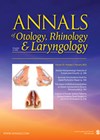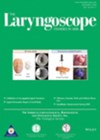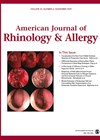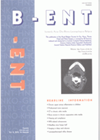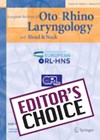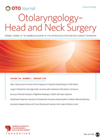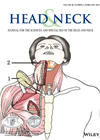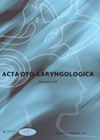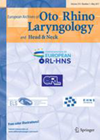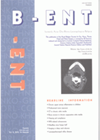
Journal Reviews
CT parameters in orbital wall fractures, choice of treatment, and patient outcome
This review from the Netherlands attempts to evaluate the relationship between CT parameters and the treatment that is used in clinical outcome (enophthalmos, diplopia and/or limitation in ocular movement). The authors look at fracture size, fracture location and involvement of...
Are quinsies worth draining?
Recent data is providing accumulating evidence that treatment failure in the management of peritonsillar abscesses (PTAs, aka ‘quinsies’) is similar when these are managed with medical treatment (MT) alone versus MT plus surgical drainage (M+ST). However, in the absence of...
A 3D-printed endoscopic sinus surgery simulator – validity testing
The challenge of gaining sufficient experiential learning to successfully navigate the learning curve toward competence has long been a challenge in surgical education. The COVID-19 pandemic, and its impact on elective capacity, has presented a further challenge to the acquisition...
An alternative view and access point
Fungal sinusitis is a common problem and it is well recognised that it can be difficult to remove all of the fungal matter from the maxillary sinus to ensure no recurrence or residual disease. This study describes a technique utilising...
Closure of septal perforations
This Belgian retrospective observational study looked at the success rate and predictive factors for success when bilateral advancement flaps were used via an external approach. In total, 111 patients were included in the study over a 16-year period. The mean...
Outcomes for transoral vestibule approach thyroid surgery
Ed’s choice explores a systematic review examining one of the recent innovations in head and neck surgery. It may come as a surprise to some that within a few years of the first published cases of transoral vestibule thyroidectomy, an...
Neurological complications associated with managing degenerative cervical myelopathy
Degenerative cervical myelopathy (DCM) is a common neuropathologic status due to degenerative changes to the cervical spine. There are multiple operative techniques available, including anterior cervical discectomy and fusion, anterior cervical corpectomy, laminoplasty, laminectomy and laminectomy with fusion. C5 palsy...
Is medical therapy without surgical treatment sufficient in treating peritonsillar abscess?
Standard treatment of peritonsillar abscess (PTA) has typically involved both medical therapy and surgical drainage either in the form of needle aspiration, or incision and drainage. However, is medical without surgical treatment sufficient? The authors suggest that medical therapy without...
What is the evidence for duration of antibiotic prophylaxis in head and neck free-flap cases?
The topic of this systematic review is one which is commonly heard in discussions between microbiologists and head and neck surgeons – what is the evidence for antibiotic prophylaxis in clean-contaminated free-flap cases, and crucially, how long should antibiotics be...
Which technique is better for turbinate reduction: surgical turbinoplasty or radiofrequency ablation?
Turbinate hypertrophy; radiofrequency; surgical turbinoplasty; visual analogue score
Managing spontaneous CSF leaks secondary to benign intracranial hypertension
Spontaneous CSF leaks are a rare entity. In this paper, a Spanish group report their experience managing the condition using endoscopic surgery in 35 patients over an eight year period. Leak locations included the cribriform plate (18/35), ethmoid roof (15/35)...
Postoperative recovery in children after ENT surgery
This Belgian prospective study reported on the postoperative recovery time after routine ENT surgery (grommets, adenotonsillectomy), and compared parental estimations of postoperative pain with those of the child themselves (however, the authors do admit that many of the children included...


